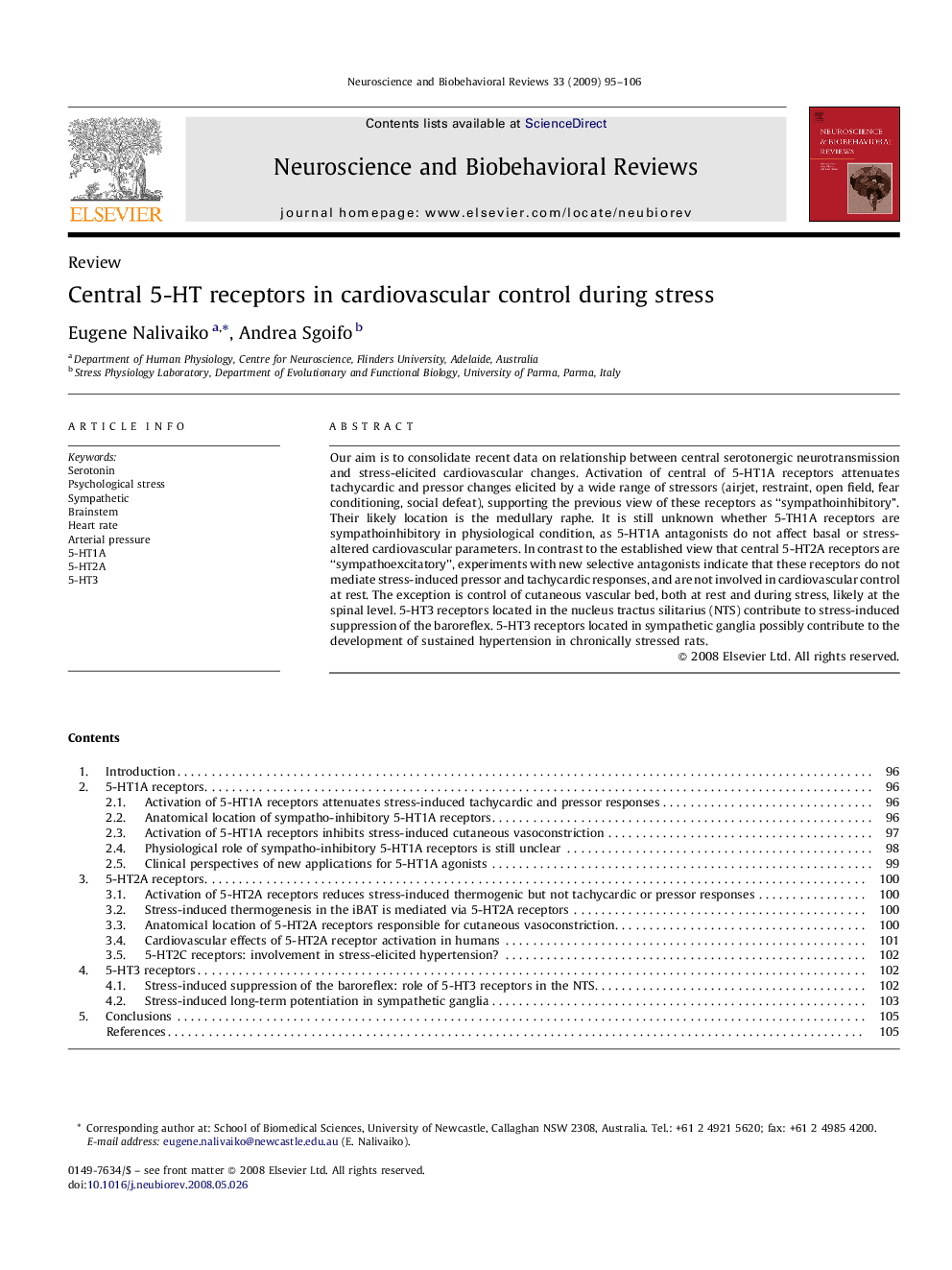| Article ID | Journal | Published Year | Pages | File Type |
|---|---|---|---|---|
| 938208 | Neuroscience & Biobehavioral Reviews | 2009 | 12 Pages |
Our aim is to consolidate recent data on relationship between central serotonergic neurotransmission and stress-elicited cardiovascular changes. Activation of central of 5-HT1A receptors attenuates tachycardic and pressor changes elicited by a wide range of stressors (airjet, restraint, open field, fear conditioning, social defeat), supporting the previous view of these receptors as “sympathoinhibitory”. Their likely location is the medullary raphe. It is still unknown whether 5-TH1A receptors are sympathoinhibitory in physiological condition, as 5-HT1A antagonists do not affect basal or stress-altered cardiovascular parameters. In contrast to the established view that central 5-HT2A receptors are “sympathoexcitatory”, experiments with new selective antagonists indicate that these receptors do not mediate stress-induced pressor and tachycardic responses, and are not involved in cardiovascular control at rest. The exception is control of cutaneous vascular bed, both at rest and during stress, likely at the spinal level. 5-HT3 receptors located in the nucleus tractus silitarius (NTS) contribute to stress-induced suppression of the baroreflex. 5-HT3 receptors located in sympathetic ganglia possibly contribute to the development of sustained hypertension in chronically stressed rats.
